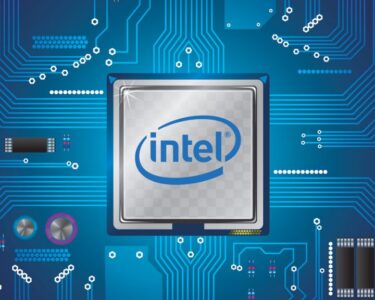In a groundbreaking development, chip giant Intel has announced the initiation of high-volume production utilizing extreme ultraviolet (EUV) lithography machines at its state-of-the-art $18.5 billion facility located in Leixlip, Ireland. Describing this achievement as a “landmark” moment, Intel aims to reclaim its leading position in the semiconductor industry, a position currently held by Taiwan Semiconductor Manufacturing Co (TSMC). With the commencement of EUV production, Intel is poised to revolutionize its manufacturing technology, gearing up to compete with the best in the industry.
The EUV machines, renowned for their precision, are capable of hitting a target as small as a person’s thumb with a laser pointer from the moon. Intel views these machines as instrumental in realizing its ambitious goal of delivering five generations of technology within a span of four years. According to Ann Kelleher, Intel’s general manager of technology development, the company is making significant progress, with two manufacturing processes completed, a third rapidly advancing, and the final two processes showing promising developments.
This facility in Leixlip represents a significant milestone as it marks the first high-volume location for Intel’s Intel 4 manufacturing process, incorporating EUV technology. This advanced technique will be utilized in the production of Intel’s upcoming “Meteor Lake” chip designed for laptops, a pivotal step toward the creation of artificial intelligence-powered PCs.
The EUV machines, which are manufactured by Dutch company ASML and cost approximately $150 million each, are colossal in size, comparable to buses. The Irish plant currently houses seven of these cutting-edge machines. A fleet of overhead robots, each equivalent in cost to an average BMW car, navigates a sprawling 22 km track within the facility, efficiently transporting silicon wafers from one tool to another.
Intel has ambitious plans beyond its Irish facility. The company is set to receive its first next-generation EUV lithography machine, the High-NA EUV, in Oregon later this year, making Intel the first chipmaker to acquire this groundbreaking technology. Traditionally, Intel finalizes new manufacturing processes at its research and development site in Hillsboro, Oregon, before deploying the templates to other global sites.
Looking ahead, Intel is expanding its footprint in Europe. The company intends to construct a significant chip complex in Germany and establish a semiconductor assembly and test facility in Poland. These initiatives are supported by eased funding rules and subsidies within the European Union, aligning with the bloc’s strategic objective of reducing its dependence on U.S. and Asian semiconductor supply.
At the inauguration of the Irish plant, Intel’s Chief Executive Officer, Pat Gelsinger, expressed his enthusiasm, declaring it the “best day for Europe.” This momentous occasion not only signifies a triumph for Intel but also represents a significant stride forward for Europe in the global semiconductor landscape.





